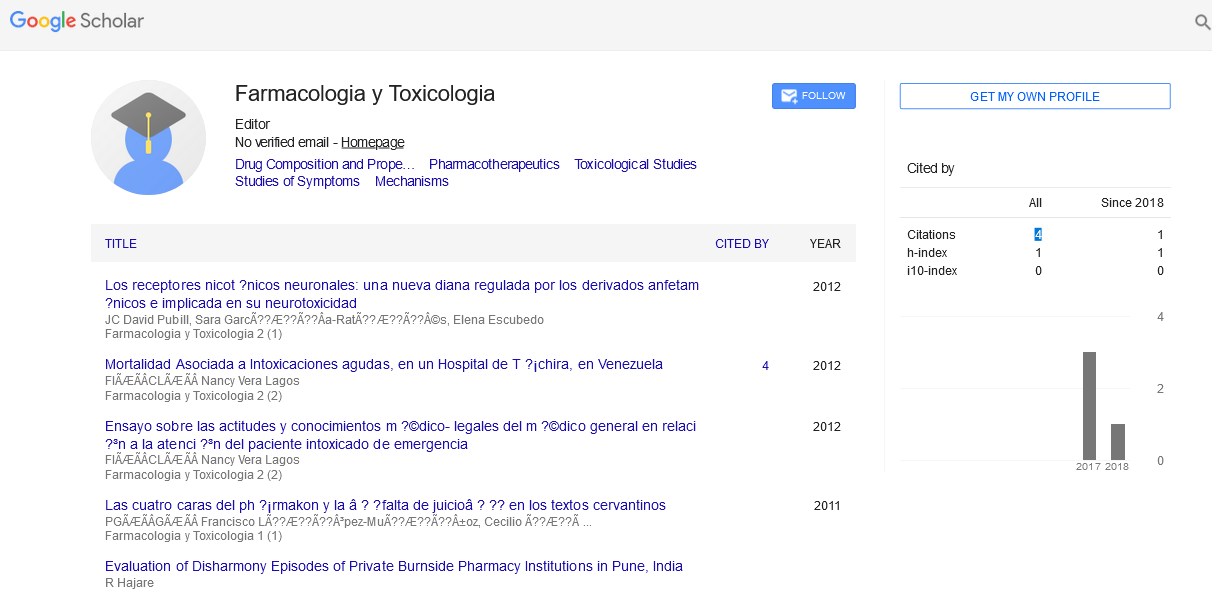Perspective - (2024) Volume 14, Issue 5
Antagonists in Pharmacology
Dekang Liu*
Department of Pharmacology, University of Akheniu, Antalya, Turkey
*Correspondence:
Dekang Liu, Department of Pharmacology, University of Akheniu, Antalya,
Turkey,
Email:
Received: 07-Aug-2024, Manuscript No. IPFT-24-15129;
Editor assigned: 12-Aug-2024, Pre QC No. IPFT-24-15129 (PQ);
Reviewed: 26-Aug-2024, QC No. IPFT-24-15129;
Revised: 01-Oct-2024, Manuscript No. IPFT-24-15129 (R);
Published:
29-Oct-2024
Introduction
In the intricate world of pharmacology, the interaction
between drugs and receptors is central to understanding how
substances affect the body. Among the various types of drug
interactions, antagonists play a crucial role. An antagonist is a
substance that binds to a receptor and blocks or dampens its
biological response. This article explores the concept of
antagonists, their mechanisms of action, types and their
significance in both therapeutic and research contexts.
Description
The basics of receptor interaction
To appreciate the role of antagonists, it's important to first
understand the concept of receptor interactions. Receptors are
specialized protein molecules located on the surface of cells or
within cells. They serve as docking sites for signaling molecules,
such as hormones, neurotransmitters or drugs. When these
signaling molecules bind to their respective receptors, they
typically trigger a cascade of biochemical events that lead to a
physiological response.
How antagonists work
Antagonists are characterized by their ability to bind to
receptors without activating them. This binding prevents the
receptor from interacting with its natural ligand (the substance
that normally binds to the receptor). Consequently, antagonists
inhibit or dampen the biological response that would typically
occur if the receptor were activated.
For example, in the case of neurotransmitter receptors in the
brain, antagonists can block the effects of neurotransmitters
such as dopamine or serotonin. By doing so, they can influence
various psychological and physiological processes, including
mood, cognition and pain perception.
Types of antagonists
Competitive antagonists: Competitive antagonists bind to the
same active site on the receptor as the natural ligand. Their
binding is reversible, meaning that the natural ligand can out
compete the antagonist if present in sufficient quantities. This
type of antagonist effectively reduces the number of available
receptors for the natural ligand, thereby decreasing the overall response. A common example is the use of antihistamines in
treating allergies. These drugs compete with histamine for
binding to H1 receptors, reducing allergic symptoms.
Non-competitive antagonists: Non-competitive antagonists
bind to a different site on the receptor than the natural ligand.
This binding alters the receptor's shape or function, making it
less responsive to activation by the natural ligand. Unlike
competitive antagonists, non-competitive antagonists do not
compete with the natural ligand for the active site. Instead, they
prevent the receptor from responding to any ligand, regardless
of its concentration. An example is the use of ketamine, which
acts as a non-competitive antagonist at NMDA receptors,
providing anesthetic and antidepressant effects.
Irreversible antagonists: Irreversible antagonists bind
permanently to the receptor, often through covalent bonds. This
binding results in a long-lasting reduction in receptor activity
because the receptor is permanently modified or deactivated.
The effect of an irreversible antagonist persists until new
receptors are synthesized by the cell. Aspirin is an example, as it
irreversibly inhibits the cyclooxygenase enzyme, which plays a
role in inflammation and pain.
Functional antagonists: Functional antagonists do not bind
directly to the receptor but instead act through different
pathways to counteract the effects of the natural ligand. For
instance, certain beta-blockers reduce the effects of adrenaline
by decreasing the overall sympathetic nervous system activity
rather than directly blocking beta-adrenergic receptors.
Clinical applications of antagonists
Antagonists have significant clinical applications across
various medical conditions. Here are a few notable examples:
Cardiovascular diseases: In treating hypertension and heart
failure, beta-blockers such as propranolol act as antagonists at
beta-adrenergic receptors. By blocking these receptors, betablockers
reduce heart rate and blood pressure, alleviating
symptoms and improving cardiovascular health.
Mental health disorders: Antagonists are also used in the
management of mental health disorders. For example,
antipsychotic medications such as risperidone act as antagonists
at dopamine receptors. By blocking excessive dopamine activity,
these drugs help manage symptoms of schizophrenia and
bipolar disorder.
Allergies: Antihistamines, such as cetirizine, are antagonists at
histamine H1 receptors. They alleviate allergic symptoms by
preventing histamine from binding to these receptors, thereby
reducing itching, swelling and other allergic reactions.
Gastrointestinal disorders: In gastrointestinal disorders like
acid reflux, H2 receptor antagonists such as ranitidine inhibit
histamine activity at H2 receptors in the stomach lining. This
action reduces stomach acid production and provides relief from
heartburn and indigestion.
Research and development
The study of antagonists extends beyond therapeutic uses.
Researchers investigate antagonists to understand receptor
functions better and develop new treatments. For example, in
drug development, identifying and designing antagonists can
lead to the creation of novel medications with targeted effects.
Additionally, antagonists are used in experimental settings to
elucidate receptor mechanisms and explore their roles in various
physiological processes.
Conclusion
Antagonists are fundamental in pharmacology due to their
ability to block or dampen receptor-mediated responses. By
binding to receptors without activating them, antagonists play a
crucial role in modulating physiological processes and treating a
range of medical conditions. Their applications span
cardiovascular diseases, mental health disorders, allergies and
gastrointestinal issues, showcasing their versatility and
importance in both therapeutic and research contexts.
Understanding antagonists helps advance our knowledge of drug
interactions and receptor functions, ultimately contributing to
more effective treatments and improved patient outcomes.
Citation: Liu D (2024) Antagonists in Pharmacology. Farmacologia Toxicologia, Vol.14 No.5: 044





